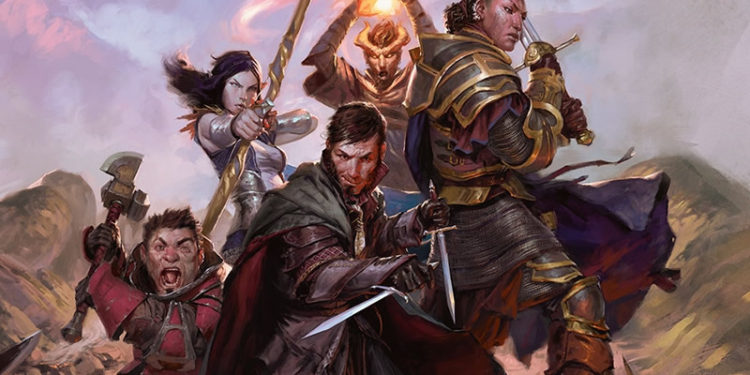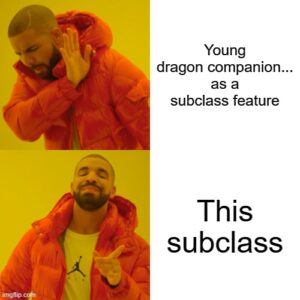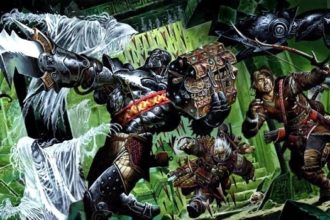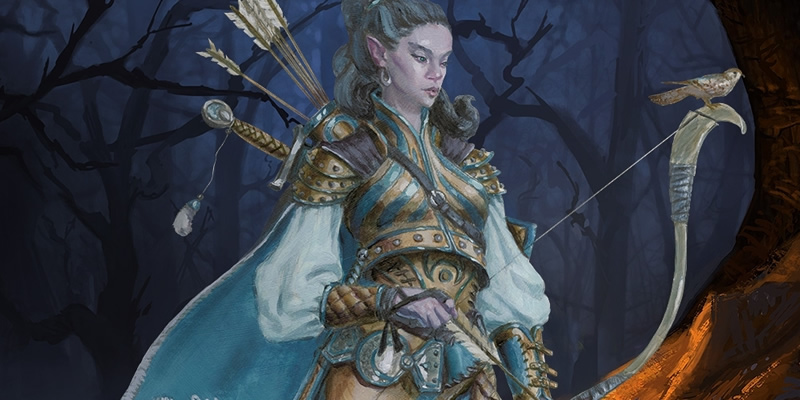Unearthed Arcana 2020: Subclasses, Part Five Breakdown

There aren’t a lot of things that could pull me away from my current freelancing work to get a weekly article out – sorry, beloved readers! – but Unearthed Arcana was that thing. Surprise!
Today we’re getting two new subclasses: the Way of the Ascendant Dragon monk and the Drakewarden ranger conclave. (I will give up on “conclave” as the subclass name for rangers when you pry it from my cold, dead hands.)
Oh, and this should all be post-Tasha content, in case that wasn’t obvious.
Way of the Ascendant Dragon Monastic Tradition
It was eventually going to be necessary to have a dragon-themed monk subclass. The idea could make one of the greatest martial-arts movies of all time, though I’m not cruising through all of the 3.5e monk prestige classes to prove the point. Not today, Satan Tiamat.
- There’s a table of super-brief origin stories for this kind of monk. I love that this has become a common, if not required, element of subclass writing. It signals the variability of character and story even within a class and subclass with fixed features.
- Dragon Disciple – okay look, you can’t fool me, that was a bard or fighter/sorcerer prestige class in 3.x. This one does three things:
- First up, damage substitution for all of your unarmed strikes, from bludgeoning (or slashing if you’re a clawed race, I guess) to orange, grape, cherry, diet, or caff acid, coid, fire, lightning, or poison. Since vulnerabilities aren’t common, you’re playing guesswork on resistances and immunities, but circumventing resistance to nonmagical bludgeoning/piercing/slashing damage a few levels early.
- You learn Draconic. Sure, of course.
- You can reroll failed Intimidation or Persuasion checks until you convert a failure to a success with this feature, after which it’s expended until you finish a long rest. I absolutely love the format on this – it’s solving a lot of classic problems around expending advantage when you have a limited supply of that currency.
- Breath of the Dragon lets you replace one attack in your attack sequence with a line or cone blast of energy, dealing two Martial Arts dice of damage, or half on a Dex save. Now, that’s initially a little shy of your Martial Arts damage, since you can’t add your Str or Dex, but at 11th level, not only are the dice bigger, but you add a third die. You have a limited number of uses, equal to your proficiency bonus, and you can spend ki to keep going, 1 ki per use.
- Early on, it’s either good or not great, depending on how well you play the positioning game; later on, it’s either amazing or pretty good.
- There’s some really interesting stuff going on with “x many uses + ki spend” in currency management. We’re going to see a lot more of that in this subclass, but the general point here is that monk subclasses have tended to give you new ways to spend ki without helping your supply of ki at all.
- Wings Unfurled at 6th level upgrades your Step of the Wind to grant a flying speed equal to your movement speed. One of the monks in my game has a magic item that more-or-less does this, and it is incredibly good for winning urban chase scenes. This has the same usage setup as Breath of the Dragon – uses per long rest equal to your proficiency bonus, spend 1 ki for an extra use. In this case, though, you absolutely have to spend ki to activate it in the first place, because it’s an add-on to Step of the Wind.
- Aspect of the Wyrm at 11th level is a team defense buff – you and allies within 30 feet gain resistance to one energy type, and retributive damage of that type against attacks from enemies in that area. The retributive damage costs the targeted character’s reaction and deals damage equal to your Martial Arts die. This area buff lasts for 1 minute and takes a bonus action to activate. You get one free use per long rest, and you can get additional uses for 4 ki a pop. That’s a lot, but if this is what you need, nothing else will do.
- Ascendant Aspect at 17th level is your big, impressive capstone for this subclass and, well, it delivers.
- 30-ft blindsight, always on.
- Your Breath of the Dragon adds an ongoing damage effect equal to one Martial Arts die to creatures that it damages (even if they succeed their initial save!); they have to pass a save at the end of their turn to end the ongoing damage. Ongoing damage is very rare in 5e, though not unknown, so it’s surprising to see it here – connected to a small AoE effect, that might be some modestly burdensome data tracking.
- That bonus action to activate Aspect of the Wyrm now also carries a big AoE damage blast – most surprisingly, there’s no saving throw against this 4d10 energy damage, they just have to already be close to your whole group.
Well, this is awesome as hell. The Monk with the Dragon Tattoo is the quirky-investigator-spy-kung-fu adventure I didn’t know I needed. This is a clear power increase over a lot of the other energy-based monk subclasses (Four Elements and Sun Soul spring to mind), but those are lackluster anyway. It’s hard to guess how the positioning will work out for escalating the damage you can deal with Breath of the Dragon, but I don’t think this will prove to be any more powerful than Open Hand. More versatile… yeah, probably?
Drakewarden Ranger Conclave
Okay, what if you had a ranger with a companion – stay with me here, I know I’m blowing your mind – and it was… a dungeon?
No, strike that, I meant: a dragon?
Well, sort of a dragon. Even a young dragon is too much. How about a drake, instead?

Weyr going to get through this subclass together. I think you’ll be Impressed. The byline on this article credits Dan Dillon, with Jeremy Crawford, Ben Petrisor, Taymoor Rehman, and James Wyatt, and they deserve a gold Red Star for this subclass, in my opinion.
- There’s another good table of Drakewarden origins. Since you take on this subclass at 3rd level, having this happen on-camera is certainly the most interesting I really like the Bahamut nod.
- Draconic Gift teaches you Draconic – no surprise there – and the thaumaturgy cantrip. The cantrip is a more unusual choice, but I assume that this is about the option to make your voice loud, as a nod to a draconic roar, as well as simply giving you access to a general set of magical manifestations.
- Drake Companion grants you your, um, drake companion, which you summon, rather than it being constantly present. You can summon it for free once per long rest, and additional summons cost 1st-level spell slots. It stays for a number of hours equal to your proficiency bonus, if it isn’t dismissed or reduced to 0 hit points first.
- There are a lot of differences between this and the Beast Master’s companion. Every little difference points to something about how the Beast Master is awkward or frustrating. Interestingly, it preserves requiring your bonus action for the drake to attack, but if you’re incapacitated, it acts on its own.
- The stat block describes a Small creature of the dragon type, that scales (heh) up with your proficiency bonus. That’s presented here in a more obvious way than before, with Armor Class, skills, saving throw, attack rolls, and damage all including the phrase “plus PB.”
- Other than opportunity attacks, drakes have a reaction to add 1d6 of their damage type to the damage dealt by another creature’s weapon attack. Even if you don’t have a spare bonus action – a common problem for rangers – your drake isn’t Toothless. (PS, never underestimate the value of positioning another creature that enemies have to handle opportunity attacks from.)
- Bond of Fang and Scale at 7th level grants a collection of benefits:
- You gain resistance to the drake’s damage flavor.
- The drake gains either a flying or swimming speed of 40 ft. Honestly it would harm nothing to change that “or” to “and.” Also, have I mentioned that the Tribality team is working on Under the Seas of Vodari, and a swimming drake companion would be awesome as hell there?
- The drake’s bite deals +1d6 damage of its energy flavor.
- Drake’s Breath at 11th level gives you or your drake a breath weapon, 6d6 damage of its damage type in a 30-ft cone, or 8d6 at 15th. The breath weapon is once per long rest, or you can refresh it by burning a 3rd-level slot. It’s a solid option, if you’ve managed to trap or cluster your enemies.
- Perfected Bond at 15th level increases the drake to Large size, adds another 1d6 energy damage, and you gain a reaction to halve damage to either you or your drake, as long as the drake is within 30 feet.
- It’s odd to see a creature jump from Small to Large with no intervening step, but this is specifically about never belonging to a size category where a Small rider can ride it but a Medium rider can’t. (See also, why Small races are superior Beast Master rangers.)
If you’ve followed the Thread of my comments, you’ve probably figured out that I like this a lot. In addition to being mechanically solid on its own, it also has laser-focused appeal for young new players who love the How to Train Your Dragon franchise and… less young… players who got into fantasy on another fantasy series.



